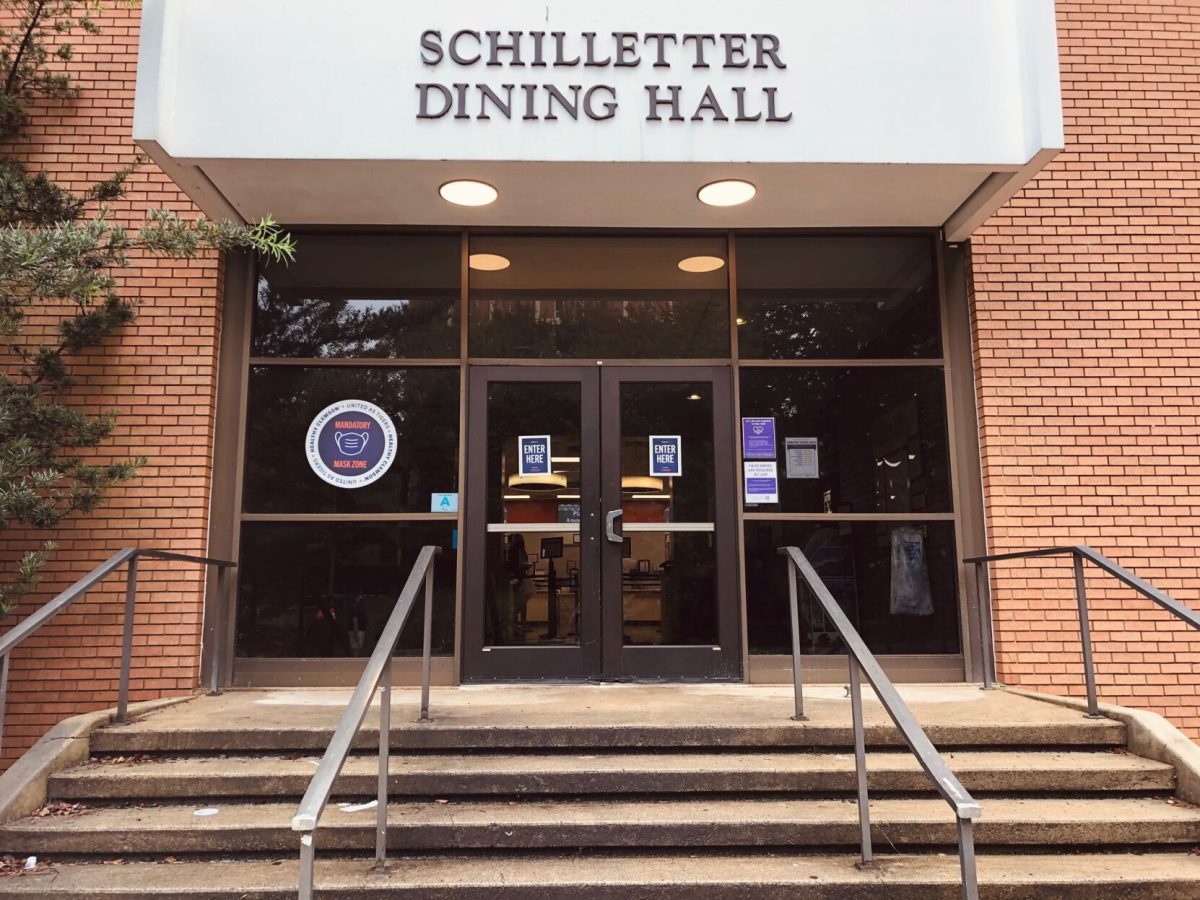The COVID-19 pandemic has brought many changes to Clemson University, including to residence halls, to football games and to classrooms. Clemson Dining has been no exception. As they have adapted their service to account for more efficient to-go options and better sanitation, Clemson Dining has continued to seek a balance between students’ safety, optimal service and general sustainability.
The dining halls have undergone many transitions in the time leading up to students’ return to campus and in the following month. While the physical setups of the dining halls are different to encourage social distancing, the dine-in and to-go experiences have also seen alterations.
“Both dining halls are operating under a significantly reduced building capacity due to COVID-19,” Clemson Dining said in an interview with The Tiger. “As a result, one of the biggest differences for the 2020-21 academic year is a capacity limit in the dining locations.”
This capacity limit, however, has left most food options virtually unaffected. The majority of stations at the dining halls across campus are open, offering everything from pizza to vegan food to desserts. Strictly to-go options are slightly more limited, but Clemson Dining does allow students to also get food to go while dining in.
Students who have gotten primarily to-go options have also noticed differences not in the food, but in the packaging. During the fall of 2019, Clemson Dining switched from using reusable to-go boxes to compostable boxes. This was due to students often not returning the reusable boxes, meaning the dining halls would run out of containers.
“The decision was made to move to compostable containers to provide an environmentally preferable option that would avoid service disruptions caused by missing containers,” Clemson Dining said.
Now, in fall of 2020, this semester has also seen changes to the type of to-go boxes used. For the first few weeks that students were back on campus, Clemson Dining offered Styrofoam to-go boxes in place of the usual compostable boxes. Styrofoam, which is notoriously known for being one of the most environmentally unfriendly materials, was being used and disposed of by thousands of students across campus. The increase in to-go containers also led to a need for more trash cans near dining halls and an increase in the frequency of garbage pickup.
The switch was a temporary one, though, and it lasted only until Clemson University’s consumer demands could be met by the compostable boxes’ supplier.
“The initial switch to Styrofoam to-go boxes for fall 2020 was made due to an insufficient supply of compostable containers to meet the demand needed at Clemson University, among other schools and restaurants in the region,” Clemson Dining said. They intend to continue using the compostable containers as long as campus’ demand can be met.
Tahj Anderson, a sophomore computer science major, was pleased to notice the switch back to compostable containers. After discovering a passion for sustainability in high school, Anderson has served as an EcoRep at Clemson and worked to encourage sustainability around campus. Anderson has helped to clean out streams, incorporated sustainable practices into events at residence halls and used the Clemson EcoReps Instagram (@clemsonecoreps) to promote ways to be more environmentally friendly.
“Our situation is not ideal for waste management, but I understand and agree with safety for the campus comes first over all else,” Anderson said in regards to some of the changes to Clemson Dining’s to-go system. “I think transitioning from Styrofoam containers to compostable containers has been a huge improvement.”
However, Anderson noted that there was a lack of places where students can compost the containers, leaving them to become landfill waste and keeping trash buildup in on-campus trash cans and dumpsters relatively high. Anderson stated that he hoped for more places to compost on campus and increased signage.
Outside of just the containers, Clemson Dining also offers individually wrapped plastic utensils, plastic water bottles and plastic bags to students getting food to go. The standards and recommendations of the CDC, DHEC, Aramark, Clemson University and various other brands factored into the reasoning for non-reusable water bottles and utensils. However, students are by no means required to take the water bottle and utensils, and they are more than welcome to utilize their own bottles and utensils once they return to their on-campus rooms.
“We allow and encourage students to use their own reusable bags for their food, but the provided option is the plastic bags, as they are a bit more durable than paper bags,” Clemson Dining said. While necessities regarding sanitation and service quality are not the best for sustainability, Clemson students are more than welcome to implement their own steps to be more environmentally friendly.
Including bringing reusable bags to the dining hall, forgoing plastic bottles and utensils and minimizing food waste, students are capable of taking steps independently to pursue sustainability. Anderson believes the first step to that process is education.
“I believe students can become more sustainable and be safe from COVID-19 by simply taking the time to educate themselves on environmental topics,” Anderson said. “Knowledge is powerful and these past few months have been very isolating, so using some of your time to learn about something as little as “how recycling works” or larger topics like “environmental racism” can really go a long way.”
Clemson Dining’s plans for the spring semester have yet to be solidified due to uncertainties surrounding COVID-19. However, regardless of procedures implemented and steps taken in the dining halls next semester, Clemson students are still able to dedicate themselves to being sustainable in their day-to-day lives.
“It is a group effort that only takes an open mind and [a] heart open to change,” Anderson said. “If we all do our part as a team, then true progress can be achieved.”









